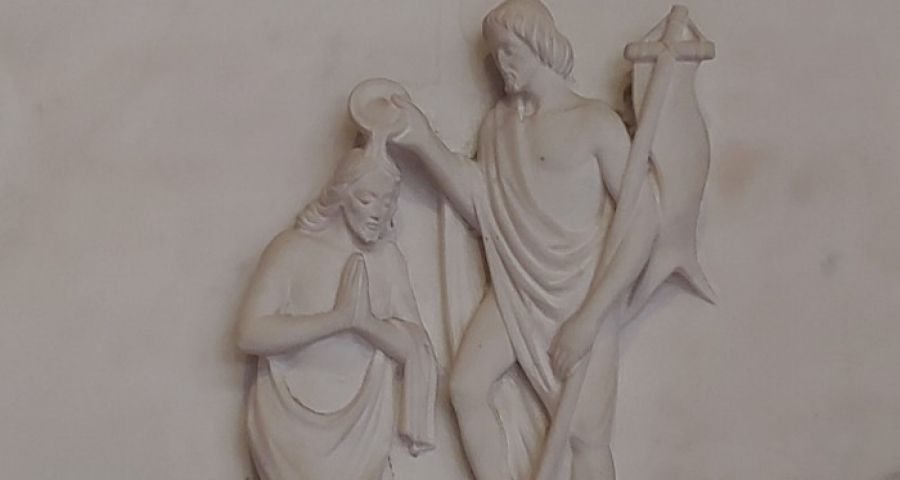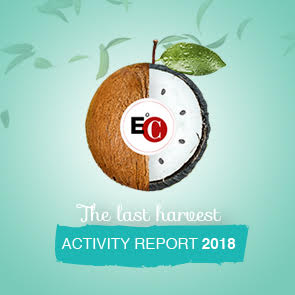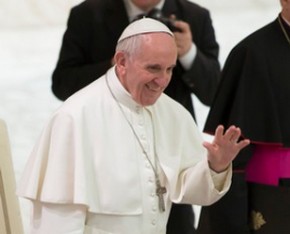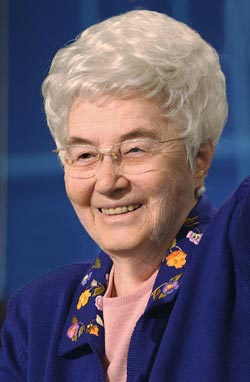The logic of charisms/1 – Here, we will now begin the exploration of the "grammar" of movements and community realities
by Luigino Bruni
Published in the Avvenire 21/08/2021
The mother of Jesus and his brothers told him: «John the Baptist baptizes for the remission of sins: let us go and be baptized by him»
The Gospel of the Hebrews, Apocryphal Gospels, p. 266
We need a new kind of poverty, that of those who renounce the possession of people. Moreover, we need to train people who do not stay today for the commitments made yesterday, but for the dreams of tomorrow
Community is a central word. Invoked in solitude and in sickness, sought and coveted when the virtual "communities" have exhausted us and we feel the need to breathe. Its warm and strong bonds call us and do not leave us alone. The community, however, is changing forms so rapidly that it is (almost) no longer recognizable. The metamorphosis is taking place everywhere, but it is all the more evident in the context of religions and in Churches, which without community would die to become mere sterile psychological and emotional consumerism. It is in fact within Churches and religions where the nostalgia and sickness of the community is felt the most, where its call, its SOS, its cry, is heard loud and clear. Any future of spiritual and religious experience today cannot help starting from a profound, honest and radical reflection on the community, with the courage to push it to its extreme consequences. This is what we will try to do in this new series of articles, in which we will explore the grammar of communities, in particular those that arise from spiritual charisms. We have already made excerpts of this work in the past years. We continue the discussion taking suggestions and inspiration from the biblical tradition, an infinite gold mine because it is inexhaustible.
Today we can almost say with certainty that Jesus began his activity within the movement of John the Baptist, where he remained for a not so brief period (months, perhaps years). Jesus was not only one of the many baptized by the Baptist, he was also a baptizer (John 3,22-24). In addition, unlike what happened in the contemporary Essene settled community of Qumran near the Dead Sea (from which we got the Community Rule), built around very precise and strict norms of common life, John's movement was a fluid, nomadic, provisional reality, where people came and went without having an actual life in common. Those who approached the Baptist were preparing for baptism and once baptized began a new life in his environment, or elsewhere. Baptism freed them enabling them to take their own free flight.
When monasteries began to flourish in the early Christian centuries, they imitated Qumran (perhaps without knowing it), not the Baptist movement, nor that of the early decades of Christianity. Whoever entered a monastery became a member of an institution thanks to a very strong bond of belonging. Bonds that were held tight and short, very short. Centuries later the Franciscan movement was born, and achieved something radically different from monasticism: not a residential community sort of life but the life of a beggar, not the centrality of the rule but of the "form of life". Francis and his companions looked a lot like Jesus, but they also looked a lot like the Baptist. The friars were not merely simpler and poorer monks: they were something new and different. At the beginning, no one confused their communities with monasteries, it would have been impossible.
The second half of the twentieth century experienced a new "axial age" of the charisms of the Church, comparable to the beggar movement of the thirteenth century. New movements and communities brought important innovations (for example: leadership of the laity, young people and women), but for the more committed (or "consecrated") members the reference paradigm remained that of the monks and other religious orders (over the centuries they became more and more similar to monks), so much so that they also took back the three vows. They did innovate, but not by much, in the forms of community life and in the individual-community relationship. It is not surprising then that the movements and communities born and flourished only a few decades ago today face the same crisis as traditional religious orders. Of course, they still have a few more additional vocations, a slightly lower average age and some young people around; however, the trend is the same, only shifted by a few years. Why? Well, as we know, for many reasons.
But we must reflect on one specific and timely element. Many spiritual movements of the second half of the twentieth century were conceived in strong continuity with the past. Their founders were daughters and sons of the Church and society of their time, and in perfect good faith, they put the new wine of their charisms into old organizational and institutional wineskins. Therefore, faced with the epochal changes of the last two or three decades, the new movements and communities are not very capable of responding to the new challenges and new spiritual needs. Their innovations have undergone a very rapid obsolescence, to the point that to an external observer a community of consecrated life of CL or members of the focolare movement today do not appear substantially different in any way from a Salesian house or a community of Pauline nuns.
Hence, a first message: old and new communities eager for the future should begin to take the urgency of an important change in community life much more seriously. Instead, they tend to do little, believing that their necessary renewal consists in a return to the charisms of the early days, or in a new spiritual radicalism. And so, they invest the few remaining energies in secondary battles, which then become their only ones – and when the forces on the field are few, the wrong battle becomes fatal. Instead, what is really needed are new forms of community life, more similar to the Baptist movement than to Qumran. However, this is not easy to understand, because the low "demand" for a community life today often comes from fragile people in search of strong belonging, attracted by the memory of the communities of yesterday. However, in the new spiritual ecosystem of the 21st century only more liquid and less structured, decentralized and less compact realities will be able to survive, non-estuary deltas, which do not aggregate people through rules and juridical bonds, but with the strength of the message of the charism and of a concrete experience. More tent and less palace, more camp and less institution, more spirit and less law, more guests and fewer bosses, more provisional and less stable, more promises and fewer votes. Communities where people are helped to reach a subjective condition of freedom and therefore of autonomy from the community itself, which do not seek a total and totalizing identification with the community charism. Because when that happens (and it has happened too often) the day soon will come when the person by dint of saying "we" no longer knows how to say "I" and therefore no longer knows how to answer the crucial question: "but who am I?" Yesterday "I am a friar" was a sufficient answer. Today it no longer is, not because the charism of Francis has diminished in any way, but because history, also enriched by Christianity and its charisms, has increased people and their conscience. Hence, something else must also accompany that "I am a friar" (which remains), something intimate that no community can offer in our place, and if it does it only creates neuroses and burnouts.
The crucial question then becomes: is it possible to create communities made up of free and autonomous people while avoiding the disintegration of the community itself? The question is not rhetorical, because it touches on the first vulnus of the communities of yesterday, which in order to survive as a community had to reduce the autonomy of their members. The origin of the Latin word communitas oscillates between two different and opposite etymologies: cum-munus, that is, a gift in common, and cum-moeni: walls in common. Communities (starting with the patriarchal family) have built their collective constructions using the very bricks of the little to no autonomy of their members. Each freely gave up their own freedom, which once given was no longer there, as in all true gifts, and then those gifts ended up building walls to "protect" those very same gifts. Communities placed very high barriers or walls to stop anyone from leaving around their people. Hence, people went in but almost never came out again (if not at a very high cost, unsustainable for most women). Physical, spiritual and psychological walls, so much so that the time the door was left open the bird remained inside the cage not having the strength to take flight into a world that was too unknown, maybe a cat would enter through that door.
The communities of today will be able to continue existing if they learn to lower their walls and barriers down to zero, transforming the walls into bridges, because it will be through those bridges that new vocations will be able to enter. There is an urgent need for a new form of poverty, that which is expressed as the renunciation of the possession of people, the most difficult kind of poverty to experience in a community, because people are their only form of wealth: and the more you experiences the poverty of goods, the more people's non-poverty will grow. Communities that know how to live on the edge of their own precipice will live. A good charism community in the 21st century can only be a tragic community, whose members go to sleep every night not knowing if tomorrow they will wake up a community again, and give thanks every morning because it is still there. By making this golden rule your own: if you want to have generative, creative and free people you have to generate a culture where people are so free that you cannot control them in the most important aspects of their life. You have to learn to live in the midst of a great coming and going of people, coming in and going out; because generating free people means putting them in a position to one day even leave. Communities, especially the spiritual and ideal ones, should make it their goal to train people who do not stay today for the commitments made yesterday, but for the dreams of tomorrow. The future, not the past, is the right space for promises capable of truly liberating people. We do not remain remembering a past that imprisoned us but imagining a future that continues to free us and free others. The "forevers" that enable people to live well are those that look forward, because those that look back know how only how to create salt statues.
A good community founder - but also a parent, manager or teacher - should rejoice when he or she sees "his" or "her" best people soar, and not consume them for their (highly important) projects. So much so that an indicator of the ethical and spiritual quality of a charismatic community is the relationship between the excellent people who have been there and those who have remained there for a long time. The higher the level, the higher the quality; the closer bound it is to one single person, the more we find ourselves in a narcissistic community. It is always very sad to see leaders surrounded by their best students for a long time, sometimes until retirement - and it is even sadder to see those best students of yesterday dying out over the years due to lack of access to open air and broader horizons. One day, an un-specified day, Jesus of Nazareth left the Baptist movement to follow his own vocation, to give birth to his own different community. John’s free "community" was such fertile ground that it generated the infinite freedom of Jesus. The Kingdom of Heaven is the place of in-finite communities.








